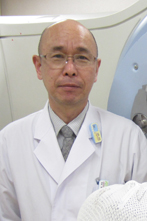Program Information
Eligibility of Mouthpiece for Radiotherapy Using 3D Printer:Use of PolyJet Photopolymer(Objet MED610)
H Kitamori1*, I SUMIDA23 , T Tsujimoto3 , H Shimamoto3 , S Murakami32 , M Ohki1 , (1) Graduate School of Medical Sciences, Kyushu University, Fukuoka, Fukuoka, (2) Osaka University Graduate School of Medicine, Suita, Osaka, (3) Osaka University Graduate School of Dentistry, Suita, Osaka,
Presentations
WE-RAM2-GePD-IT-1 (Wednesday, August 2, 2017) 10:00 AM - 10:30 AM Room: Imaging ePoster Theater
Purpose: To evaluate a usefulness of a biocompatible class VI resin PolyJet photopolymer Objet MED610 modeled by 3D printer as a fixation device for head and neck radiotherapy patients.
Methods: A mouthpiece was made of the GC Exafine putty (GCEP). After the CT reconstruction of the GCEP and its surface extraction, the MED610-made mouthpieces were replicated. Through the replication process, a threshold value, flattening coefficients, and a spatial resolution were changed to extract the model surface. Five mouthpieces of 5 dry skull bones were created using GCEP. The sizes of the mouthpieces made of GCEP and MED610 were measured with a vernier caliper in width, length, and height, respectively. The reconstructed volume for both materials was measured by Archimedes' principle using pure water. Each measurement was performed five times. For evaluation of the dose distribution, each mouthpiece made of GCEP and MED 610 was placed in the same place in the water phantom, CT imaging was performed, and a single beam was set for 4 MV X-ray beam in the treatment planning system.
Results: CT values of GCEP and MED610 were 741 HU and 115 HU, respectively. The differences of sizes and volume between GCEP and MED610 were 0.046 mm in width, 0.038 mm in length, 0.064 mm in height, and 0.382 cm³ in volume, respectively. The parameters to create the surface 3D image were a threshold value of 100 HU, a thinning factor of 0.1, a flattening coefficient of 1.0, a resolution of 5.0 or more, and a Laplacian smoothing of 1.0 from the change in size and volume. It was found in dose distribution that the beam attenuation of the MED610 was close to that of only water and remarkably lower than that of GCEP.
Conclusion: The mouthpiece made by MED610 was suitable for head and neck radiotherapy.
Contact Email:
